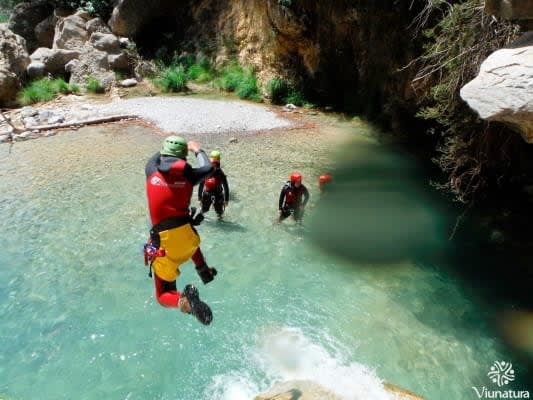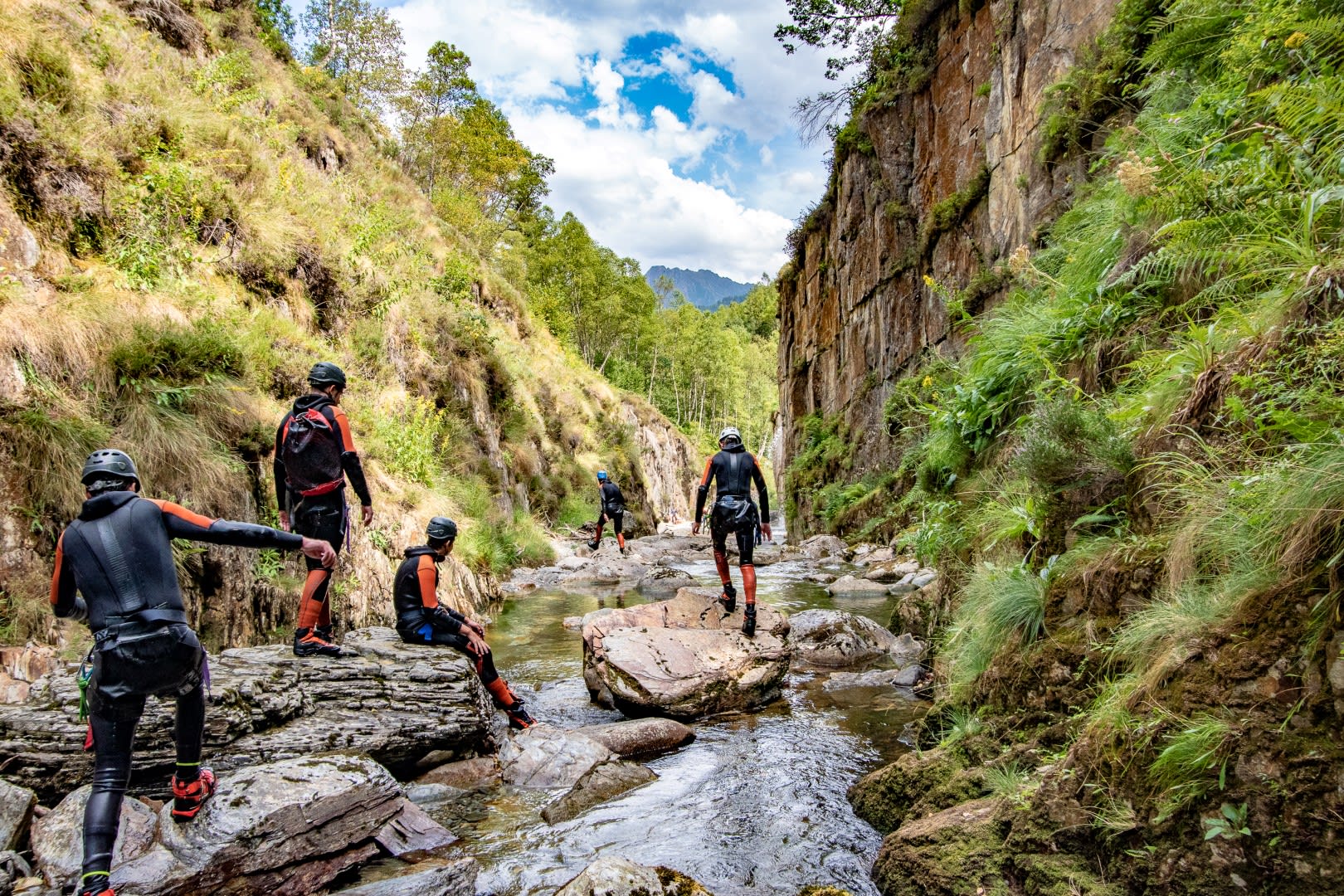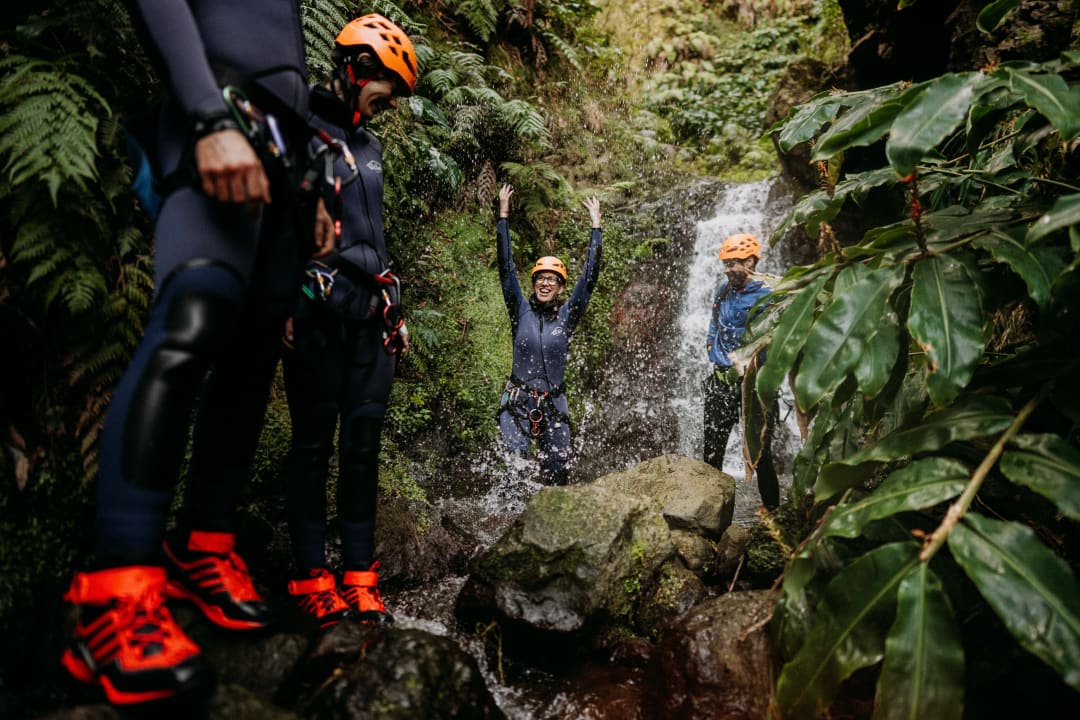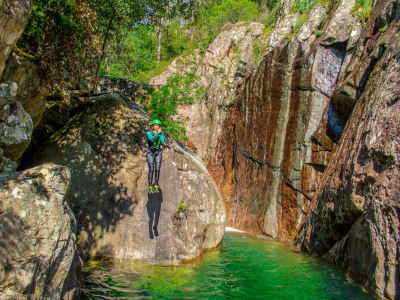
The best Canyoning activities
621 activities match your criteria

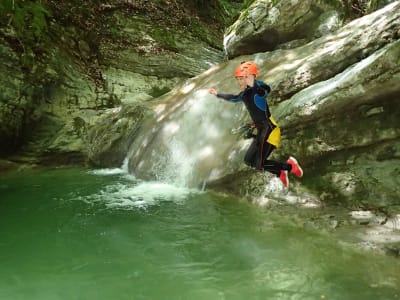
Canyon of Angon near Annecy lake in Haute-Savoie

Canyoning in Langevin River in Saint-Joseph, Reunion Island
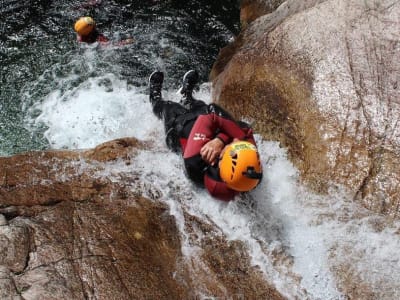
Pulischellu Canyon in Aiguilles de Bavella, Corsica
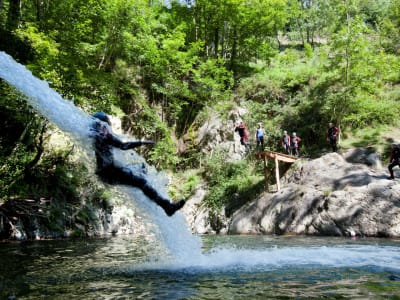
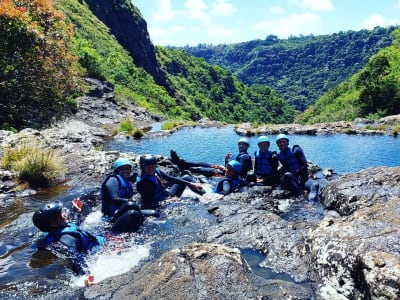
Canyoning initiation at the 7 waterfalls of Tamarin on Mauritius
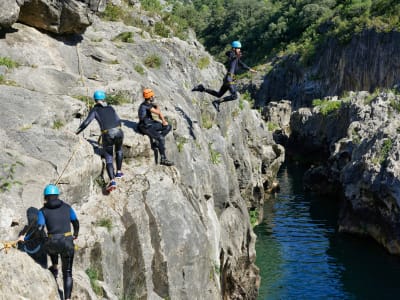
Canyon du Diable in Saint-Guilhem-le-Désert near Montpellier

Aquatic Hiking in the Gorges du Verdon from Castellane
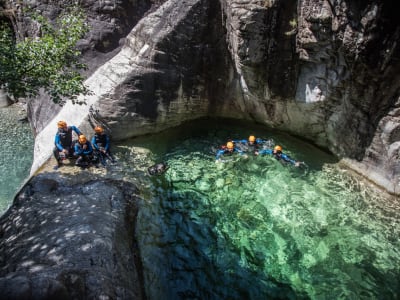
Richiusa Canyon in Bocognano, near Ajaccio
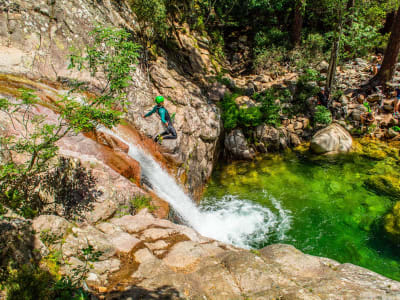
Sporty Canyon of Purcaraccia in Bavella, Corsica
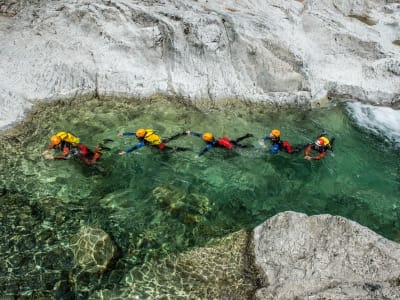
Verghellu Canyon near Corte
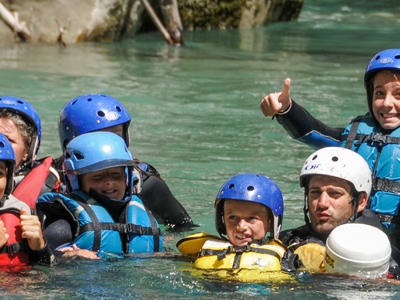
Aquatic hike in the Verdon gorges

Initiation Canyon of Pulischellu in Bavella, Corsica

Canyon of Angon near Annecy lake in Haute-Savoie

Canyoning in Langevin River in Saint-Joseph, Reunion Island

Pulischellu Canyon in Aiguilles de Bavella, Corsica

Family Canyoning in la Besorgues, Ardèche

Canyoning initiation at the 7 waterfalls of Tamarin on Mauritius

Canyon du Diable in Saint-Guilhem-le-Désert near Montpellier

Aquatic Hiking in the Gorges du Verdon from Castellane

Richiusa Canyon in Bocognano, near Ajaccio

Sporty Canyon of Purcaraccia in Bavella, Corsica

Verghellu Canyon near Corte

Aquatic hike in the Verdon gorges
About Canyoning
What is Canyoning?
Canyoning, also known as canyoneering in some parts of the world, is an exhilarating outdoor adventure sport that involves navigating through canyons using various techniques such as hiking, climbing, rappelling, jumping, sliding, and swimming. It’s an immersive experience where participants can explore rugged, often remote landscapes and enjoy nature from a unique perspective. Whether you're a thrill-seeker or someone simply looking to try something new, canyoning is an accessible activity for everyone—beginners and seasoned adventurers alike.
One of the best parts about canyoning is the diversity of experiences it offers. From serene water slides and crystal-clear pools to adrenaline-pumping jumps and rappels, canyoning allows you to engage with nature in ways few other sports can match. This mix of physical challenge and stunning scenery makes it an unforgettable adventure.
The History and Origins of Canyoning
Canyoning has evolved over centuries, initially more out of necessity than sport. In ancient times, early explorers and indigenous populations had to navigate rugged canyon terrains for survival, often to find shelter or food sources. However, the modern concept of canyoning as a recreational activity began in the mid-20th century, especially in Europe.
The sport gained popularity in the 1980s, particularly in France and Spain, where outdoor enthusiasts began exploring canyons in the Pyrenees and the Alps. The development of modern equipment, like advanced ropes, harnesses, and wetsuits, made canyoning safer and more accessible to adventurers of all skill levels. By the 1990s, canyoning had spread globally, becoming a key outdoor activity in countries like Australia, New Zealand, and the USA.
One notable milestone in the sport's history is the exploration of the famous Verdon Gorge in France during the 1960s and 1970s. This majestic canyon, with its deep ravines and turquoise waters, became a symbol of canyoning, inspiring many to take up the sport. Today, canyoning is a worldwide phenomenon, practised by thousands of people eager to discover the beauty of the natural world in a dynamic and challenging way.
Different Types of Canyoning
Canyoning can take various forms depending on the environment, location, and level of experience required. Here are some common types of canyoning experiences:
Exploration Canyoning
This is perfect for beginners who want to get a feel for canyoning without too much technical difficulty. Exploration canyoning typically involves hiking through canyons, encountering easy slides, small jumps, and wading through water. No advanced skills are required, making it ideal for first-timers and families. Locations such as the Siagne River in France and Tenerife in the Canary Islands offer excellent beginner-friendly experiences.
Technical Canyoning
As the name suggests, technical canyoning involves more advanced skills like rappelling (abseiling) down steep rock faces or waterfalls. These routes often require more specialised equipment and guidance from experienced professionals. Popular destinations for technical canyoning include the Blue Mountains in Australia and the Alpes-Maritimes in France. This type of canyoning is perfect for those who want to challenge themselves and take their adventure to the next level.
Aquatic Canyoning
For those who love water, aquatic canyoning is the ultimate thrill. It often involves swimming through deep pools, navigating strong currents, and even diving into waterfalls. This type of canyoning requires a certain level of swimming ability and confidence in water. Destinations like Costa Rica’s Naranjo River or the Tyrol region in Austria offer some of the best aquatic canyoning experiences in the world.
Winter Canyoning
For the truly adventurous, some canyons can be explored even in winter, with icy waters adding an extra layer of challenge. This is a niche form of canyoning that requires specialised equipment like drysuits and careful planning due to the risks associated with cold water and ice. Winter canyoning is practised in regions like the Swiss Alps or Scotland’s highlands for those seeking a unique cold-weather adventure.
Competitive Canyoning
Though less common, there are competitive canyoning events where participants race to navigate a canyon course in the shortest time. These events combine technical skills with endurance and speed, offering a competitive twist to an already exciting activity.
Essential Equipment for Canyoning
Canyoning requires a combination of technical and protective equipment to ensure a safe and enjoyable experience. Here's a breakdown of the key gear:
Wetsuit
A good wetsuit is crucial for keeping warm in cold water, which is common in most canyons. Depending on the water temperature, the thickness of the wetsuit can vary. A 3-5mm wetsuit is generally recommended for most canyoning adventures.
Helmet
Safety is paramount in canyoning, and a sturdy helmet protects against falling rocks or accidental head bumps during rappelling and climbing.
Harness and Ropes
For routes that involve rappelling, a harness and ropes are essential. The harness attaches to the ropes via a carabiner, allowing you to descend steep cliffs or waterfalls safely. Dynamic and static ropes are used, depending on the nature of the descent.
Canyoning Shoes
Canyoning shoes need to have excellent grip, as canyoning often involves walking on slippery surfaces like rocks and mud. These shoes should also be durable enough to handle wet and dry conditions.
Descender and Carabiners
A descender is a mechanical device that helps control the speed of a rope descent. Together with carabiners, it ensures a safe and controlled rappel. The most common type of descender used in canyoning is the figure-eight device.
Dry Bag
A dry bag is essential for keeping personal belongings like phones, cameras, and snacks safe from water. While not mandatory for every trip, it’s a handy accessory for those who wish to carry personal items through the canyon.
Backpack
A lightweight, waterproof backpack designed for canyoning will help carry essential gear, food, and water during longer trips. It usually features mesh sides for easy drainage when moving through water.
Top Canyoning Destinations Around the World
Canyoning can be enjoyed in some of the most stunning natural locations on the planet. Here are some of the top spots to consider:
Verdon Gorge, France
Known as the “Grand Canyon of Europe,” the Verdon Gorge offers a thrilling canyoning experience with its steep limestone cliffs and crystal-clear turquoise waters. There are routes for beginners and experts alike, making it an ideal destination for anyone looking to dive into canyoning.
The Blue Mountains, Australia
Famous for its dramatic cliffs and waterfalls, the Blue Mountains near Sydney offer some of the most picturesque canyoning experiences in the world. The region features several canyons suitable for various skill levels, with both easy and technical routes available.
Interlaken, Switzerland
Switzerland’s Interlaken is a hub for adventure sports, and canyoning is no exception. The region's canyons are known for their exhilarating jumps, slides, and waterfalls, with routes like Grimsel and Chli Schliere offering unforgettable experiences.
Costa Rica
Costa Rica’s tropical rainforests are home to some of the world’s most beautiful aquatic canyons. The Naranjo River offers an adrenaline-packed canyoning adventure with rappelling down waterfalls and deep jungle exploration.
Madeira, Portugal
The island of Madeira is an emerging hotspot for canyoning, with its lush landscapes and steep ravines. The Ribeira Funda canyon offers everything from jumps and slides to rappelling, making it a perfect destination for canyoning enthusiasts.
Technical Vocabulary for Canyoning
To help you navigate the world of canyoning, here are some common terms:
Rappelling/Abseiling: Descending a steep cliff or waterfall using a rope.
Anchor: A point where a rope is securely attached to allow safe descent.
Slide: A natural water slide formed by the smooth surfaces of rocks.
Jump: A leap into a pool of water from a height.
Pitch: The vertical distance you will descend during a rappel.
The Benefits of Canyoning
Canyoning offers several physical and mental health benefits. Physically, it provides a full-body workout, as participants engage in climbing, swimming, and hiking. It’s also a fantastic cardiovascular exercise that builds strength and endurance. Mentally, canyoning helps reduce stress by immersing participants in nature, away from the distractions of daily life. The thrill of conquering obstacles, combined with the peace of being surrounded by pristine environments, creates an experience that boosts self-confidence and provides a sense of achievement.
Tips for Beginners
If you're thinking of trying canyoning for the first time, here are some key tips:
Choose a beginner-friendly canyon: Start with an easy route that doesn’t require advanced skills. Many canyons offer guided tours that cater specifically to novices.
Join a guided tour: For safety and enjoyment, always canyon with a qualified guide, especially if it’s your first time. Professional guides ensure you have the correct equipment and understand safety procedures.
Listen to your guide: Always pay close attention to the instructions provided by your guide, especially when it comes to rappelling and jumping.
Dress appropriately: Make sure you’re equipped with the right gear, particularly a wetsuit, shoes with a good grip, and a helmet.
Stay within your limits: It’s essential not to push yourself too hard, especially if you’re new to the sport. Stick to routes that match your skill level.
Discover Nature Like Never Before
Canyoning offers a unique and thrilling way to connect with nature, blending adventure, adrenaline, and serenity in one unforgettable experience. Whether you're a beginner taking your first leap into a crystal-clear pool or an experienced explorer tackling more technical routes, canyoning opens up a world of excitement and discovery. The combination of physical challenge, breathtaking landscapes, and the sheer joy of overcoming natural obstacles makes this sport both rewarding and memorable.
With expert guides to ensure your safety and an array of canyons suited to all levels, there has never been a better time to try this incredible outdoor activity. Canyoning not only pushes your limits but also allows you to experience hidden natural wonders that few get to see. If you’re ready for an adventure that blends the best of nature and sport, book your next canyoning trip on Manawa and immerse yourself in an experience you’ll never forget!
